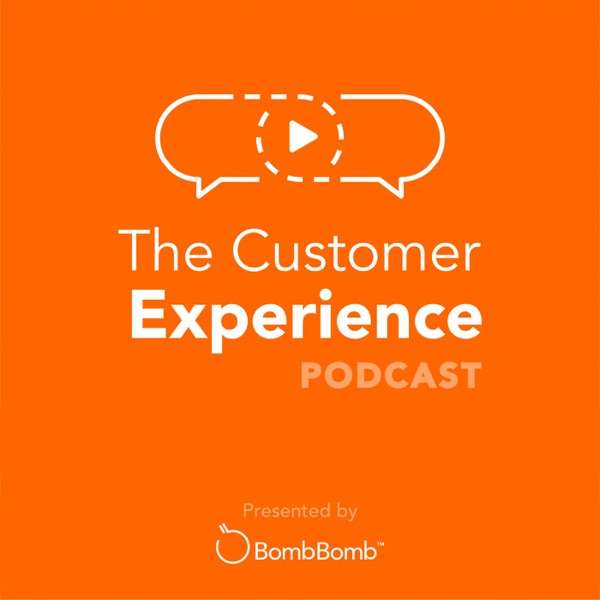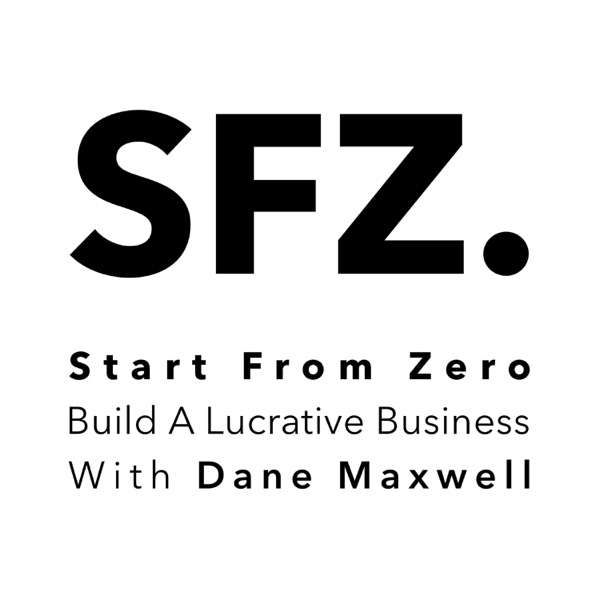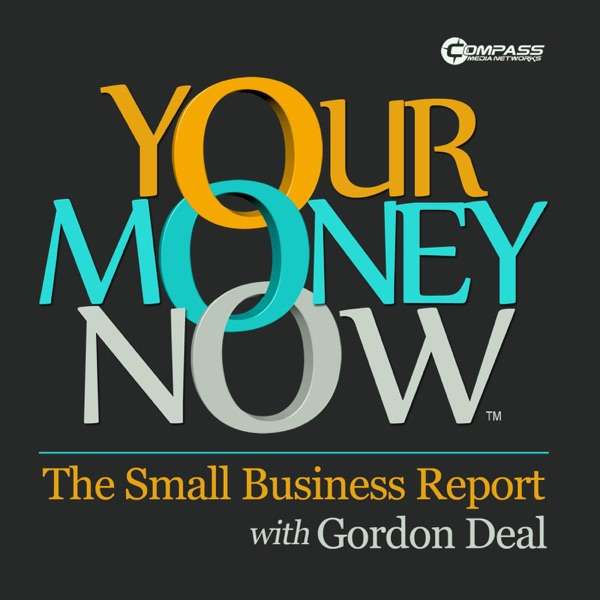The status quo is to focus on acquisition as opposed to retention.
Most of the current approach is built on faulty premise that customers are promiscous.
How can you build customer intimacy in a few clicks
Preview (see attachment or web link for the full transcript):
Speaker 0 (0s): Most of what you consume from so-called experts contains either half-truths outright lies or information that is not useful. They keep telling you how wet water is and you know, it is doing, you know, gut. I am committed to share in nothing but the absolute unfiltered on edited, no euphemism truths.
Every single time you hear my voice.
Speaker 2 (37s): Welcome everyone. I have been having this conversation with my friend, Ana, who is in Australia. We've been talking about human to human relationship in the customer experience on, are you still with me?
Speaker 3 (54s): I am still here. I must. Thanks for having me back.
Speaker 2 (58s): You're welcome. I am. I'm excited to have the second part of this conversation. So, you know, you educated me a lot around how we think about the front end of the funnel today and conversion and, and how that sort of operates. And now I want to turn the conversation and set the stage again into, in today's world. We acquire a customer, right? We deliver some goods and services to them, and then we never talked to them again, most companies.
And to the extent we talked to them, it's when they call in or email or go online and send the chat in and have a problem. And we work really, really, really hard to solve whatever problem it is they have, and then rinse and repeat. And then eventually like some relationships they want to break up with us, right? They say, Hey, I want the cans. I think about the cable companies. For example, the cable companies have a retention departments that if you called and said, Hey, I want to break up with you.
They send you there. But when you get to this place, it's not, let me tell you the value in of, they just simply go, Hey, I'll buy, you know, about, we give you a discount, right? Because you know, clearly I'm not a customer. I am for sale. I am some type of deal and they throw money at the problem and maybe the customer stays and maybe they don't. So as I think about your framework, first off, let's start by you just sort of saying like, why have we accepted this to be the norm?
And do you agree that there could be a better way of retention and loyalty than all the, all the ways we're doing it today?
Speaker 3 (2m 45s): Absolutely. And you know, it's not me saying it, look at the stats if retention and loyalty and all of that was not severely dysfunctional. Then we would have really good retention. And a lot of businesses would have really loyal fans. And that isn't the case right now, the status quo is to put all of the energy and all of the funding into customer acquisition, right? So customer acquisition costs are escalating. I think the latest Shopify figures show that customer acquisition costs are going through the roof.
It's becoming untenable to acquire customers. So unless you've got large pockets of VC funding and you're in the red as sustainable businesses, getting harder and harder. Why is, you know, we look at, and it's not just digital businesses. You look at established institutions like banks, right? And I'm sure it's the same in the states, as it is here in Australia, you're a loyal customer of a bank for years and years, you go in with a complaint and you say, listen, you've got to help me out. I want to stay with you. I want to stay with your institution, but this isn't working and they go, ah, too bad.
So sad. Right? So they're ha they're putting all of their energy into acquiring new customers. It's like we live in a, you know, if you look at e-commerce and digital commerce, we are effectively living in a Tinder world where at any moment in time, there's 2 billion people on your phone and you can keep swiping and going on dates and keeps wiping and going on dates. And then, you know, read the full, hilarious book by Aziz Ansari at the end of the day, all of that access, access to new and new and new dates doesn't make you happy.
And so all of this focus on customer requisition without putting energy at all into the back end into the, what happens next is just escalating costs and making businesses unsustainable.
Speaker 2 (4m 34s): And, and I think that is so obvious when you think about it, right? It's the cliche of, it's easier to keep a customer than to get a new one, but in some ways, one of the many side effects of the localization and Facebook ads, as if you have deep pockets, you don't have to be loyal to any customer anymore, right. You just swipe, right. And it's financial. It's why, you know, many large companies that are doing billions and billions of dollars in revenue are either on profitable or are showing very, very sort of little profits.
So we get that. Is there a, another way, is there another way, or shouldn't meet this, except this is the world we live in. No one can ever figure out loyalty or is there a, is there another way or is, or do you just think we're not trying?
Speaker 3 (5m 34s): Well, I think, I think everyone's putting in a solid effort. I think it's like anything, you know, until you understand that donuts are not good for you every day as a main food source, you'll keep eating the donuts cause they taste good. So, you know, there is a better way. There's a better way. And in the last couple of years, I've had success with over a hundred different brands. So all high growth brands exporting into new markets and we've consistently been able to raise customer loyalty, retention and lower customer acquisition costs for all brands from literally from rice horses to shoes, to engineering companies like right across the board.
And the reason we've had the success is because we've gone back to first principles. How do people form relationships? There's a pattern to that. We can leverage that. How do people make decisions? There's a pattern to that. We can leverage that, you know, I'm sure your audience has come across. Robert Cialdini's work. He wrote a book principles of influence back in the eighties. It's I dunno, a gazillion copies sold, right? The book is brilliant. It talks about seven leavers that you can use to influence anyone about anything, or we know this stuff.
And then it's like a giant mass amnesia when we step into the digital space and we don't use any of these same tactics, we forget that at the end of every transaction in the digital space is a human and humans are influenced in predictable ways. So it's just a matter of kind of reminding ourselves and not accepting the status quo and saying, yes, there is sensibility and putting energy into Customer Retention. We're going to weather the storm of economic downturns better.
We're going to build a loyal customer base that will stay with us for better. We're going to create at the risk of sounding old, go back to the old fashioned world where businesses made profits Radical, right? So I'm going to, I'm going to just stay on this radical roll and throw something very controversial out there, right? Low conversion rates are helping your competitors grow. And here's the science behind that 97% of the customers that come to your website leave, and these could be customers looking for a new product, or it could be customers coming in to get reassurance or make a complaint or whatever.
But 97%, if your conversion rate is two or 3%, 97% of people leave. And the people that leave because there's now an element of frustration, they didn't get what they wanted when they came looking, they are willing to spend up to 16% more with your competitor. So your failure to engage, your failure to delight is making that customer go to your competitor. Who's in the next tab. They're not over here in Australia. No, no. There's zero energy to go to the next tab and they're willing to spend 16% more.
So your low conversion rates are helping your competitors grow.
Speaker 2 (8m 35s): And, and man, when I, when I, when I think about that, I wonder when most people say that, Hey, we're going to spend energy to keep a customer, right? Whether that's keeping them after they've purchased and keeping them on our sites and do all of that, it seems to be very sort of reactive and almost selfish. And I don't mean selfish in any judgmental way. You know, you know, like that's kind of where, so, so what I mean by that is if you come to my site and I think you want to buy something, I'm going to put this big, buy something so that you get by the thin and you're off, right?
There's all this literature around. Don't let them hang around your site that often, quickly convert them off. You go on the support side. Did you come to my site? Looking for help is also the same deal. It's costing me money. If you want it to have this, let me just give you, here's an FAQ. What have you. So like, there's this push in the other direction and I'm, you know, I'm a recovering technologist. I'm not fashion technology for technology sake.
I'm simply saying there's this energy that's like, I don't want to really interact with you any deeper. Then come in, get the stuff you got. Problem. Here's the answer. And I know what do you, where do you say to that kind of reflexive businesses leaning away? If you will, like, I wanted to be sanitized, come in, buy the stuff, go have a problem, click your off your goal. And then I hear you talk about building a relationship and it seems like the marketplace is going vast in the opposite direction.
Speaker 3 (10m 19s): Yeah. I mean, it's a great, great point. And I actually enjoyed one of your past interviews with Steven, where you talked about this at length. So I think direct your audience. There won't repeat any of that. Goodness. But I think fundamentally let's take an example. Let's look at a business like Qualtrics. So Qualtrics started with doing survey staff and now, you know, I think they, they raised $600 million at the last race. They're enormous. And they're able to effectively formulate how to do the retention part of customer service at scale, by looking at patterns and being predictive.
So as an example, if you're selling shoes and there is a break in a particular line of shoes and people are coming back and complaining about, you know, this particular model of shoe, more than the average they can pro they can capture that and get the customer service departments to proactively reach out to people who bought those shoes and say, look, we know that we've got an issue with these shoes. You might want to keep them, but if you don't, here's a remedy. And so it all comes back. You know, if we come back to first principles, which is often useful to understand the all going forward, if we look at satisfaction, right?
So customer satisfaction, how is that calculated? In essence people, it's a, it's sort of a, it's a product of two things, your expectations and your perceptions. If your expectations are really, really low coming back to our earlier conversation, if your expectations about things are really low and the perception or the delivery of the product was just a little bit above, you're going to be super happy because your expectations were low. If your expectations are high and the delivery is at the same level above average, but lower than your expectations, you're going to be really unhappy.
And so you think, okay, well, all of this is subjective. How do I, as a business influence whether my customers are satisfied or not. And again, it's proven that you can do that through the provision of information. So take, for example, you know, in the olden days, when we used to fly and you'd chop for a flight and American airlines would say, sorry, your flight is delayed by 30 minutes. And so your natural reaction, you were expecting to fly at a certain time, your flight is delayed. They tell you a flight is delayed. You're unhappy. You're like pissed.
I'm unhappy. I'm going to go and complain, right? But if the person on the little megaphone says your flight's delayed by 30 minutes, we've just had an unfortunate situation where a lady is delivering a baby on the plane. And it's going to take us a little bit longer than expected to get that plane turned around for you. All of a sudden you're like warm and fuzzy, right? So the delivery of the delivery of the actual experience didn't change. Your expectations were where they were. But simply by providing information, you're able to completely change a negative into a positive.
You know, if you're a restaurant, you go to a restaurant, your table's not ready and you get offered a little appetizer while you're waiting in line. Your negative is turned into a positive. And so coming back to your point around customer service and putting energy into the front end, rather than the backend at the backend, using information and using the tools that you have to moderate satisfaction levels and customers is huge. And so, yeah, and that doesn't get delivered with a coupon for stay with that cable company for another year.
We'd know you're really unhappy, but we'll make it, you know, we'll give you a little teaser so that you're unhappy with us longer. Something that makes them happy.
Speaker 2 (13m 58s): Yeah. I mean, that is, that is, that is so spot on. And I think one of the lessons I'm taking from this, and for those of you who are listening to, or on the, on the service or contact center, or what have you, is that you've got to separate the, the act of break things from what we're talking about, which is loyalty. Like the break fix is a transactional. And I, this is a completely different than this is the same reason, right?
Why you call your grandma with no, like you're just checking in on her, right? It's, it's a relationship. It's not because you need something or you something no. And oh, by the way, when your grandma also calls at once you to be her tech support, you, you fix it. But then that doesn't mean you, you still don't work on the relationship. And I think it's that mindset. And, and, and, and for too long, we've kind of given up on everything has become, I can acquire a new customer by going out and just paying for it, eating into profits, or I can acquire a customer by giving them one who was unhappy credits, again, eating into profits.
Like we have no other tools in the tool belt. There is a given up on it. And in some ways, you know, when I, when I talk about s

 Our TOPPODCAST Picks
Our TOPPODCAST Picks  Stay Connected
Stay Connected







